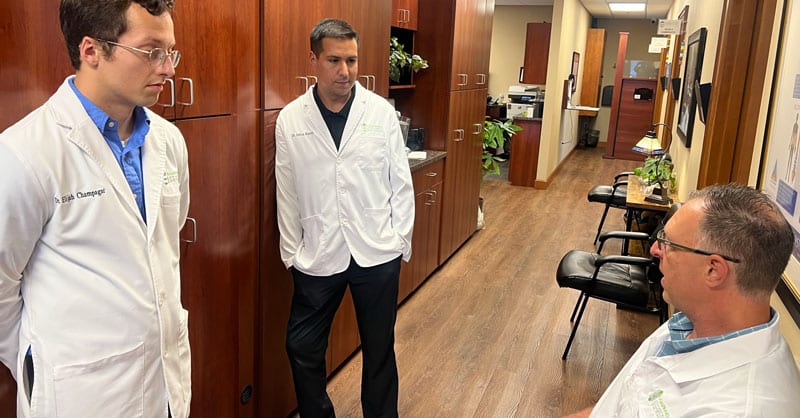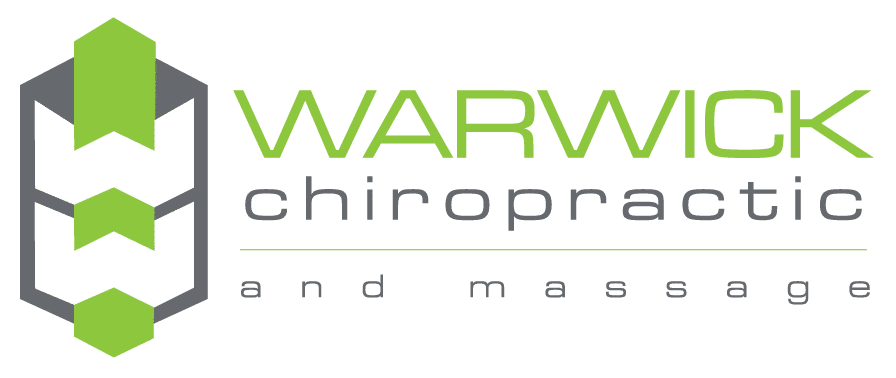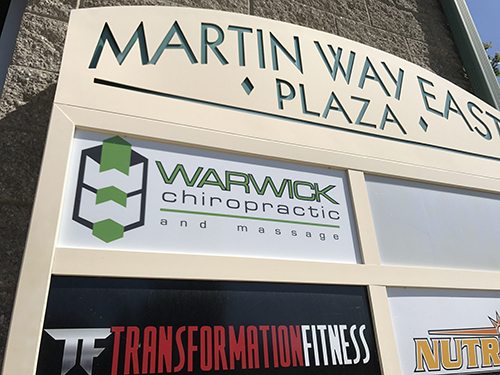Why Doesn’t Chiropractic Treatment Get Rid of My Pain in One Visit?
The simple answer to why doesn’t chiropractic treatment get rid of my pain in one visit is because healing is a gradual process. Your body needs time to adjust and rebuild healthy patterns.
There’s a common misconception that your pain should disappear after just one chiropractic session. Your body’s pain patterns typically develop over time, and healing follows a similar gradual process. When you visit a chiropractor, they’re addressing layers of muscle tension, joint restrictions, and nerve irritation that have often built up over months or years. Think of it like straightening teeth with braces – the change needs to be progressive and sustainable. Your body requires time to adapt to the adjustments, rebuild strength, and establish new movement patterns that will help prevent future problems.
Key Takeaways:
- Healing is a process that varies by individual, with some experiencing immediate relief while others require multiple treatments due to different stress patterns and conditions in their bodies
- Treatment duration depends on the condition – acute issues like minor aches may resolve in 1-2 visits, while chronic conditions or injuries from accidents typically need 8-12 visits
- Recovery involves both professional treatment and self-care practices to help bring the body back to balance over time
The Complexity of Pain Relief
Pain relief through chiropractic care involves multiple bodily systems working together – your nervous system, muscles, joints, and connective tissues all play vital roles. Your body needs time to respond to adjustments and heal properly. Just as a broken bone doesn’t heal overnight, your spine and surrounding tissues require multiple sessions to achieve lasting relief and proper function.
Individual Variability in Pain Perception
Your pain experience is uniquely yours. Factors like your stress levels, previous injuries, daily activities, and overall health condition influence how you respond to treatment. Some patients experience significant relief after one adjustment, while others need several sessions to achieve the same results. Your nervous system’s sensitivity and pain threshold also affect how quickly you notice improvements.
The Duration of Chronic Conditions
Chronic pain conditions that you’ve experienced for months or years typically require more extensive treatment plans. Your body has likely developed compensatory patterns and muscle memory that need to be gradually retrained. A condition that took years to develop won’t disappear after a single treatment session.
Consider how long you’ve been experiencing your symptoms – this often correlates with the number of sessions needed for effective relief. Your spine may have undergone structural changes, and surrounding muscles might have adapted to incorrect positioning. Through consistent treatment, your body can gradually return to proper alignment and function, but this process requires patience and multiple sessions to achieve lasting results.

The Mechanics of Chiropractic Adjustments
Chiropractic adjustments work by applying controlled force to specific joints in your spine or other areas of your body. These precise movements help restore proper alignment and mobility, allowing your nervous system to function optimally. Your spine houses delicate nerve pathways that control everything from muscle function to organ systems, making proper alignment important for overall health and pain relief.
How Adjustments Work on a Physiological Level
Your body responds to chiropractic adjustments through multiple physiological mechanisms. The controlled movements stimulate mechanoreceptors in your joints, triggering the release of pain-reducing chemicals and promoting increased blood flow to affected areas. This process also helps reduce inflammation, relax tense muscles, and restore normal nerve communication patterns throughout your body.
The Importance of Addressing Underlying Issues
Quick pain relief might mask deeper structural problems that need attention. Your spine may have developed compensatory patterns over months or years, leading to the current pain symptoms. These patterns often involve multiple joints, muscles, and movement habits that require systematic correction through repeated adjustments.
Consider how your daily activities, posture, and previous injuries have contributed to your current condition. A thorough treatment plan addresses these underlying factors through targeted adjustments, specific exercises, and postural modifications.
Research shows that patients who complete their recommended treatment plans experience longer-lasting results compared to those who stop after initial pain relief. Your recovery timeline depends on factors like injury severity, tissue damage extent, and how long you’ve had the condition.
These are just two important reasons for why doesn’t chiropractic treatment get rid of my pain in one visit.
Building Momentum: The Treatment Process
Your body’s healing journey through chiropractic care follows a natural progression that builds momentum over time. Each adjustment contributes to realigning your spine, releasing tension, and allowing your nervous system to function optimally. Think of it like training for a marathon – you wouldn’t expect to reach peak performance after one training session. The same principle applies to your body’s response to chiropractic treatments.
The Role of Consistency in Chiropractic Care
Regular chiropractic visits create a cumulative effect in your body’s healing process. Your muscles and ligaments need time to adapt to new alignment patterns, and each adjustment builds upon the progress of previous sessions. Most patients notice lasting improvements after 8-12 visits, though this varies based on your specific condition and lifestyle factors.
Understanding Treatment Plans and Their Timelines
Your treatment timeline reflects the unique nature of your condition. A recent muscle strain might resolve in 2-3 visits, while chronic back pain from years of poor posture could require 12 or more sessions. Motor vehicle injuries typically need 8-12 visits, whereas a simple tension headache might clear up after just one or two adjustments.
The frequency of your visits typically starts higher – perhaps 2-3 times per week – then gradually decreases as your body maintains its corrections longer. Your chiropractor monitors your progress and adjusts this schedule based on how your body responds to treatment. Factors like your age, overall health, stress levels, and daily activities all influence your healing timeline and are considered in your personalized treatment plan.
The Mind-Body Connection in Healing
Your mind and body work in tandem during the healing process. Mental states directly influence physical recovery through hormone regulation, muscle tension, and pain perception. Understanding this connection helps explain why healing rarely happens instantly and requires a holistic approach combining physical treatment with mental well-being.
Psychological Factors Affecting Pain and Recovery
Your emotional state plays a significant role in how you experience and recover from pain. Stress, anxiety, and negative thought patterns can amplify pain signals and slow healing progress. Research shows that patients with positive outlooks often recover faster than those experiencing depression or high stress. Common psychological factors include:
- Stress levels and cortisol production
- Sleep quality and quantity
- Overall emotional well-being
- Previous experiences with pain
Thou shall recognize that addressing these mental aspects is equally vital as physical treatment.
Integrating Self-Care with Professional Treatment
Your recovery accelerates when you combine professional chiropractic care with dedicated self-care practices. Daily stretching, proper posture maintenance, and stress management techniques complement your in-office treatments and help maintain alignment between visits.
Following your chiropractor’s recommendations for home exercises, applying ice or heat as directed, and maintaining proper ergonomics at work create a comprehensive healing environment. These practices help prevent regression between appointments and support long-term recovery. Your active participation in the healing process through consistent self-care routines often determines the speed and completeness of your recovery.
Patient Expectations and Realities
Your body’s healing timeline varies significantly based on factors like injury severity, duration of the problem, and your overall health condition. While some patients experience immediate relief after one adjustment, most conditions require multiple visits to achieve lasting results. Chronic back pain typically needs 8-12 sessions, whereas acute conditions might resolve in 2-3 visits. Understanding this natural healing progression helps set realistic expectations for your treatment journey.
Common Misconceptions About Chiropractic Visits
Many patients arrive expecting instant, permanent relief after a single adjustment – similar to taking a pain pill. This misconception overlooks how your body actually heals and adapts. Chiropractic care works by progressively realigning your spine, reducing inflammation, and allowing your nervous system to function optimally. Each adjustment builds upon the previous one, creating lasting structural changes rather than temporary symptom relief.
Cultivating Patience and Commitment to Recovery
Your healing journey requires consistent engagement with treatment plans and at-home care recommendations. Recovery patterns differ – a recent sports injury might resolve quickly, while decades-old postural issues need extended care. Following your chiropractor’s recommended visit frequency and home exercise program accelerates your progress toward lasting wellness.
The healing process mirrors natural growth patterns – just as a plant doesn’t mature overnight, your body needs time to adapt to structural corrections. Your chiropractor monitors your progress, adjusting treatment frequency based on your response. Typically, visits become less frequent as your condition improves, transitioning from intensive care to maintenance adjustments that help prevent future issues.

Conclusion
So why doesn’t chiropractic treatment get rid of my pain in one visit? Your path to pain relief through chiropractic care is as unique as your body and the stress patterns it has developed over time. While you might experience immediate relief in some cases, your body typically needs multiple sessions to achieve lasting results. Your healing journey depends on various factors, including the type and duration of your condition, whether it’s a recent injury or chronic pain.
You can think of chiropractic treatment as a process of gradually restoring your body’s natural balance, much like how a garden needs consistent care to flourish. When you work with your chiropractor through a customized treatment plan, you’re giving your body the time it needs to heal properly.
At Warwick Chiropractic & Massage, we are here to help you. We accept many insurance plans and of course cash is accepted too. We are walk in friendly, but also have a scheduling system if you need to be seen at a specific time. Any questions, feel free to contact us or call us 360-951-4504. We would love to answer your quesion, Can a chiropractor help me? Yes, we can.
Frequently Asked Questions
Q: Why do some patients require multiple chiropractic visits while others experience immediate relief?
A: Each patient’s condition is unique, influenced by different stress patterns and varying degrees of problems. Some patients may experience dramatic changes after one adjustment, while others require more time due to chronic conditions, injuries from accidents, or long-standing imbalances. The healing process depends on factors like the type of injury, duration of the problem, and individual body responses to treatment.
Q: How many visits are typically needed for chronic pain conditions?
A: For chronic conditions like persistent lower back pain or pinched nerves with radiating symptoms, patients typically require 8-12 visits on average. However, simpler issues like occasional headaches might resolve in just 1-2 visits. The treatment duration varies based on the severity of the condition, the patient’s overall health, and their body’s response to adjustments.
Q: What factors influence the healing timeline in chiropractic care?
A: The healing timeline depends on multiple factors including the nature of the injury (acute vs. chronic), the duration of the problem before seeking treatment, the patient’s overall health condition, and their body’s natural healing capacity. Additionally, the type of condition being treated plays a significant role – for example, work injuries or motor vehicle accidents typically require more extensive treatment compared to minor aches and pains.
Dr. David Warwick, DC, is a board-certified chiropractor with over two decades of experience helping people find fast, effective relief from back and neck pain. He is the only chiropractor in Lacey, WA certified in the Zone Technique — a specialized healing method that restores balance to the body’s six systems for long-term wellness.
At Warwick Chiropractic & Massage, Dr. Warwick focuses on short-term, results-driven care, helping patients return to life without unnecessary long-term treatment plans. His clinic welcomes walk-ins and offers convenient online scheduling for modern, flexible chiropractic care.
Dr. Warwick is committed to educating his patients and the public about natural pain relief, spinal health, and how chiropractic care can be both simple and life-changing.







